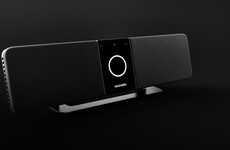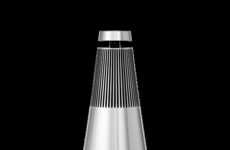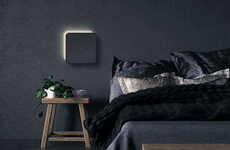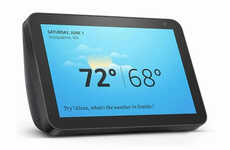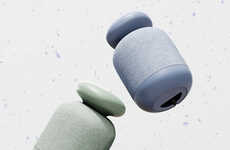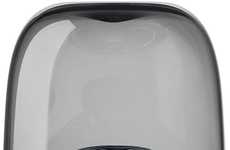
The HiddenHUB Uses Infrared Sensors to Optimize Its Audio Levels
Cadhla Gray — September 18, 2015 — Tech
References: kickstarter & engadget
In order to enhance its audio output levels, Hidden's new smart speakers scan the room to determine its size and shape using infrared sensors. The HiddenHUB also uses an accelerometer to determine whether it is mounted sideways or right side up on a table. With this information, the smart speakers are able to distribute frequencies evenly throughout the room, across various Hubs or other Bluetooth speakers.
As if adding infrared sensors to a sound system wasn't enough, the sleek design also boasts other benefits. Its simple circular top is touch-sensitive, with one tap starting or stopping the song and two taps skipping songs. To lower and raise the volume, the user can swipe the top of the Hub in a circle. Finally, there's an AutoPlay feature that senses when a person has left the house, turns the system off and plays the song from the place it left off upon return.
As if adding infrared sensors to a sound system wasn't enough, the sleek design also boasts other benefits. Its simple circular top is touch-sensitive, with one tap starting or stopping the song and two taps skipping songs. To lower and raise the volume, the user can swipe the top of the Hub in a circle. Finally, there's an AutoPlay feature that senses when a person has left the house, turns the system off and plays the song from the place it left off upon return.
Trend Themes
1. Room-scanning Smart Speakers - The use of infrared sensors and accelerometers to determine the size and shape of a room allows for optimized audio distribution.
2. Touch-sensitive Sound Systems - Touch-responsive circular tops and swipe-based volume controls create a more intuitive user experience.
3. Autoplay Sound Features - Automatic song resumption when returning to the room and automatic system shut off when leaving the room simplify the user experience.
Industry Implications
1. Smart Home Technology - Integrating room-scanning and touch-sensitive features into smart home sound systems presents a disruptive innovation opportunity.
2. Consumer Electronics - Developing more intuitive and user-friendly sound systems presents an opportunity in the consumer electronics industry.
3. Audio Equipment - Incorporating infrared sensors and accelerometers into audio equipment allows for optimized audio distribution and presents an opportunity for innovation.
2.5
Score
Popularity
Activity
Freshness


